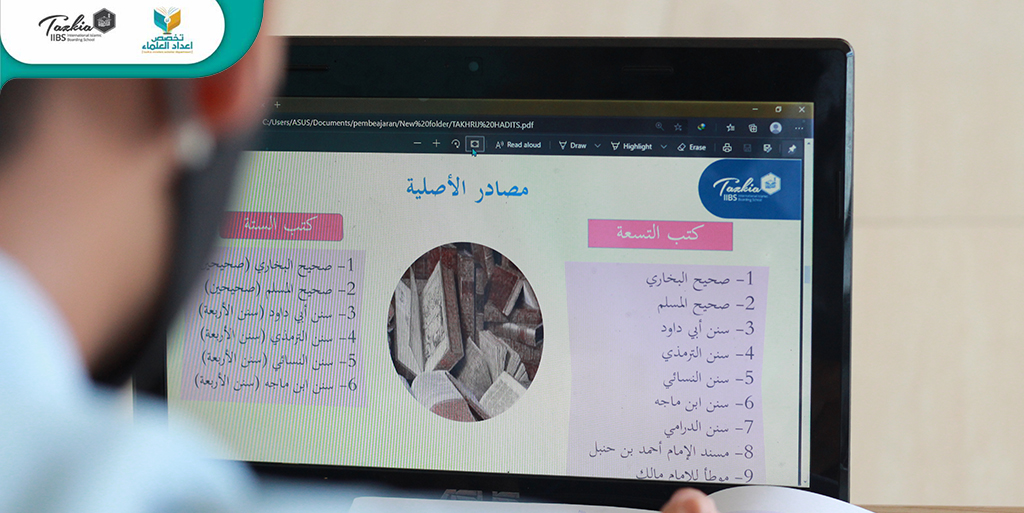Training of Takhrij Hadith for Students, Ulama Major of Tazkia IIBS Prepares Qualified Graduates
Tazkia International Islamic Boarding School (IIBS) held Takhrij Hadith training once again for ulama major students of year 11 (11/23). The training was supervised by the chief of ulama major, Ustadzah Nunun Zainun Ph.D. both virtually by zoom application for those in home and face-to-face. It is supposed, following the training, students are able to trace sanad or narrator of hadith and able to determine the degree of hadith.
She reavealed that, today, people have shared hadith easily, however it remains unclear because it is not followed by the narrator and the writer of the book. Thus, it is possible that the hadith is dhoif or even, false. The training will teach students how to know hadith from the authentic books that only publish hadith of the Prophet. The knowledge is crucial, especially for those in ulama major who would become Islamic priest.
Takhrij Hadith is an actvity to trace hadith from literature or authentic hadith books. Six main books and three additonal books are to be main references to trace hadith. In order to know the degree of a hadith whether it is authentic, hasan, or dhaif, one needs to dissect the sequence of sanad and see who is the author of the hadith book. Sanad which is coherent and unbroken at the same time can be proof of the authenticity of a hadith.
Before starting the practice of takhrij hadith, Ustadzah Nunun explained that there were five indicators that students could use as keywords to start a search. First, by looking at Rawi Ala or friends who narrated hadith. Second, look at the first lafadz of the matan or the contents of the hadith. Third, see one of the lafadz from the matan. Fourth, looking at the hadith theme. Fifth, see the nature or type of hadith, whether it is related to Islamic law or muamalah.
Misinterpretation of the author of the book and the narrator of the hadith often becomes a big problem. The original narrators are those who make narratives, starting from the Messenger of Allah, the friends, the tabi, the tabiin to the authors of the hadith books and on to us. It should be continued and not be broken, she explained.
Following the explanation of tracing hadiths, the students started practicing. They are facilitated by an application called Maktabah Syamilah, digital application contains authentic books of hadith to search the hadith required. After finding hadiths from various books, then the students had to dissect who were the narrators in a hadith sanad chart, thus they will know the degree of the hadith.
If they find a hadith shared without the sanad or the author of the book, they will be able to know the hadith degrees and share the tracing with the public, she said.
Ustadzah Nunun hopes that the students could develop their abilities in hadith takhrij following the training. In addition, students are expected to be more familiar to the authentic traditions of the Prophet by practicing takhrij hadith more frequently with the help of applications, and of course, sharing their search results with the wider community.
As Muslims, we are required to prioritize valid traditions and apply them in everyday life. If what we practise is a hadith that is dhaif and even fake, of course, it would lead to error, said Ustadzah Nunun. (Nai / lil)
